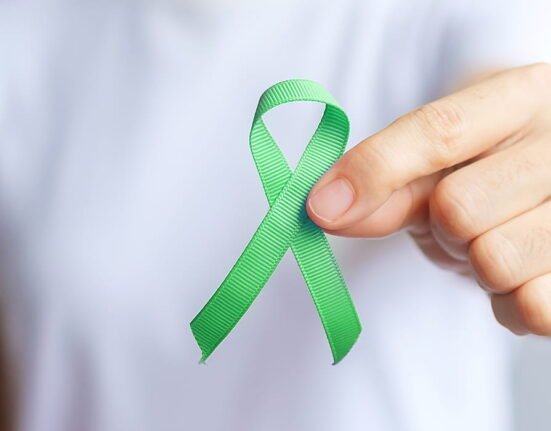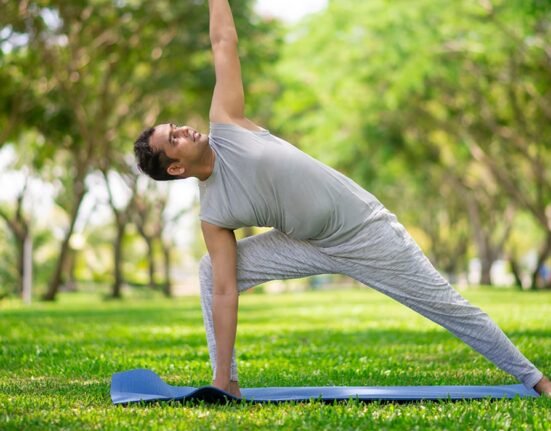Psychological tools are employed to enhance personal well-being through offering ways of coping with life issues. Mental well-being, emotional, psychological, and social, enables one to be happy and strong in handling stress. Employment of such tools improves positive feelings and a sense of direction, which are critical in building meaningful relationships and engaging in meaningful activities. As Gautam et al. (2024) discussed, mental well-being is crucial in maintaining the quality of life.
Several techniques, including cognitive-behavioural therapy (CBT) and mindfulness, work well to enhance mental health. CBT reconditions negative thought patterns, whereas mindfulness increases awareness moment by moment, reducing anxiety and enabling emotional equilibrium. These techniques, when integrated into daily life, enhance emotional resilience and enable psychological health. In addition, as noted in Mental Health (2025), mental health is critical in community involvement and socio-economic progress.
Read More: Reframing Negative Thoughts for a Positive Life
The Role of Psychology in Understanding Mental Health
Psychology is a vast set of concepts required for the explanation of human behaviour and mental processes. Psychology basically examines how individuals perceive, think, and feel due to the interaction of a wide range of internal and external factors. Among the fundamental concepts of psychology is mental health, and this is a state of well-being that allows an individual to manage the stresses of life and be productive in their society. According to Mental Health (2025), mental health is more than the absence of disorder; it is on a continuum with biological, psychological, social, and environmental factors, as discussed in Gautam et al. (2024).
Psychological functioning is another critical consideration that can be measured with instruments like the Ryff Scales of such factors as self-acceptance and meaning in life (Seifert, 2005). Cognitive behavioural theory (CBT) is also a key theory in psychology, with a focus on the interaction of thoughts, feelings, and behaviours to construct healthier coping mechanisms (Lee & Chae, 2025). Knowing these constructs provides individuals with the power to enhance their own well-being.
Read More: Awareness And Useful Solutions To Psychological Disorders
Knowledge of Cognitive Behavioural Therapy (CBT) Techniques
1. Core Principles of CBT
Cognitive Behaviour Therapy (CBT) is based upon the idea that cognitive, affective, and behavioural reactions are strongly interconnected. At the centre of the process is one of the foundational principles, that of cognitive restructuring, a process that involves the identification and challenging of unhelpful or negative thought patterns to create healthier emotional reactions. The process allows individuals to identify distortions in thought processes—e.g., catastrophizing or overgeneralization—and replace them with more realistic, balanced views. CBT also involves a strong emphasis on the process of changing behaviour through practical means that allow for participation in positive experiences, which are most likely to result in feelings of accomplishment and overall well-being.

Another fundamental element of CBT is its focus on skill development in effective coping skills. These involve preparing the clients with skills in effective coping from stress using techniques such as problem-solving and relaxation training. According to research by Sheykhangafshe et al. (2024), CBT is effective in improving emotional regulation and self-esteem among individuals with issues such as Imposter Syndrome. Thus, CBT offers a structured approach to developing mental resilience through the restructuring of cognitive processes and the promotion of active behavioural change.
Read More: What Catastrophizing Does to Your Mind—and How to Stop It
2. Practical CBT Exercises for Self-Practice
Cognitive Behavioural Therapy (CBT) provides helpful self-help skills that can have the potential to greatly improve an individual’s well-being by challenging negative thought patterns. Central to CBT is the recognition of these negative thinking patterns, commonly known as cognitive distortions. To start this process, one can keep a thought diary, writing down negative thoughts at the time they are experienced and the situation leading up to them. This facilitates the identification of repeated cognitive themes, such as catastrophizing or overgeneralizing.
After these thoughts have been identified, the following step is reconstructing them through evidence-based thinking. People are encouraged to question the truth of their negative thoughts by posing sceptical questions to themselves: What is the evidence for and against this thought? Is there a more logical way of thinking? This process helps shift from irrational thinking to logical analysis, towards a healthier mental state. Through repetition of these techniques, people can rewire their thought process and enhance emotional control, in accordance with evidence that points towards CBT’s potential to improve mental state and emotional resilience (as cited in Sheykhangafshe et al., 2024).
Read More: How to stop Negative thinking?
The Place of Mindfulness in Personal Development
1. Definition and Benefits of Mindfulness
Mindfulness is the perception of one’s thoughts, emotions, body sensations, and the external world, maintained over time. Mindfulness activities like meditation and slow breathing enhance this perception, allowing one to be in the here and now without judgment. The practice has a profound impact on mental health, with reduced stress and anxiety, enhanced emotional regulation, and enhanced resilience. Mindfulness generates self-awareness, allowing one to notice negative thinking and reacting patterns, which results in healthier coping.

Gómez-Borges et al.’s (2022) study indicates that there is evidence for the fact that personal traits, such as emotional intelligence, act as mediators between mindfulness and well-being. Daily mindfulness also improves interpersonal relationships by enhancing empathy and compassion. Lastly, mindfulness in everyday life improves personal well-being and workplace relationships by cultivating supportive working relationships with others.
2. Mindfulness Practices of Daily Life
Mindfulness training can significantly enhance well-being by developing awareness in the here and now. Breathing exercises, such as holding the breath for four counts and then exhaling slowly, ground people in the now and enable them to relax in the face of adversity. Meditation training is also imperative; focusing on a spot or breath and deflecting distractions enhances emotional control and coping in adversity (Keng et al., 2011).
The integration of mindfulness in daily life involves its use in stressful situations. Observing thoughts and feelings without judgment permits emotional understanding, leading to more positive reactions (Gkintoni et al., 2025). These procedures enable one to manage experiences better.
Therapeutic Journaling for Self-Reflection and Insight
1. Benefits of Journaling to Mental Health
Journal keeping is a helpful addition to mental health, providing self-expression and emotional working through. Frequent writing promotes emotional awareness and understanding, with increased self-awareness as people work through emotional patterns and triggers. Reflective practice in this way helps manage stress as concern is externalised, lessening worry. The therapeutic benefits of journaling have been researched, assisting people in managing depression and anxiety and clarifying thoughts and problem-solving (How to journal for mental health: 7 tips to get started — Calm Blog, 2025). Frequent journaling also promotes mindfulness and potential physical health benefits, including a healthy immune response (Koziol & Thoune, 2021, pages 6-9). Overall, journaling is a helpful resource to enhance general mental health.
Read More: Alternative interventions to Journaling
2. Effective Journaling Strategies and Questions
Journaling is a private way of analysing your thoughts and feelings. Begin by selecting a medium you prefer, e.g., a notebook or a computer program. Establishing a routine, e.g., a daily or at particular times, increases the worth of this reflective task. Write without fretting over spelling and grammar. Utilise prompts, e.g., “What went well today?” to assist your writing.

The application of metacognitive strategies may facilitate learning obtained from journaling. Research has indicated that metacognitive reflection of texts fosters individual growth (Koziol & Thoune, 2021, pages 1-5) and facilitates emotion regulation through knowledge of patterns of thought and action (Koziol & Thoune, 2021, pages 6-9). Consistent reflection on entries helps you track progress and enhance your writing skills.
Strategies for Creating Habits for Good Change
1. Mastering the Habit Loop: Cue, Routine, Reward
The habit loop has three basic components: cue, routine, and reward. The cue is the trigger that sets the habit off; it may be an environmental cue, a state, or even a time of day. Morning, for example, might cue someone to drink a cup of coffee. Next comes the routine, which is the behaviour that it triggers. In our coffee case, the routine is brewing and consuming that cup of coffee. Last is the reward—the pleasing result that makes the behaviour happen again. This might be heightened alertness or merely the pleasure of consuming coffee.
The true power of this loop lies in the manner in which these pieces form connections over time. As discussed in Gardner et al. (2023), knowing this system enables one to identify their cues and rewards easily and, therefore, change or create new habits with ease. By identifying patterns in their own routine habits, humans can intentionally create healthier habits and rewards that maximise their well-being.
Read More: Simple Self-Care Habits That Boost Your Mental Health
2. Developing Healthy Habits Strategies
Creating positive habits begins with understanding the habit loop: cue, routine, and reward. Understanding your cues in your environment for the behaviour you want to promote is the secret. Placing exercise gear next to your bed, for example, can result in consistent exercise. Another strong technique is the application of “if-then” plans; for instance, stating, “If it’s 5 PM on weekdays, then I will go for a run,” can enhance following your plan (emphasised in Gardner et al., 2023).
Tracking progress through journals or apps allows reflection upon success, and the setting of low milestones provides motivation and encouragement for good behaviour through reward. In addition, sharing your goals with friends or family members boosts commitment and responsibility. Through the combination of these methods, people can develop sustainable lifestyles for effective lifestyle change.
Read More: How Lifestyle Changes Can Affect Your Health
Developing Self-Compassion to become Emotionally Resilient
1. Why Self-Compassion in Coping with Stress
Self-compassion is necessary for stress coping and a positive attitude in the midst of suffering. By treating themselves with kindness instead of beating themselves up with cruel self-criticism, people can maintain themselves emotionally stable. Self-compassion has been known to reduce anxiety and depression, as a cushion against emotional hurt (Brad Brenner, 2024). It constructs emotional strength and enables one to cope with adversity with kindness and optimism (Brad Brenner, 2024). Self-compassion practitioners are also resilient and better adjust to problems (Kristin D. Neff, 2023). Self-compassion constructs more effective emotion regulation, providing better coping mechanisms in tough situations (Karakuş et al., 2025). Minor acts of kindness, such as affirmational self-talk or awareness of breathing, act as buffers against stressors (Brad Brenner, 2024).
2. How to Practice Self-Compassion in Daily Life
Self-compassion is something that can be learned through many practical daily ways to cultivate emotional strength and overall well-being. A great place to start is to integrate self-compassionate rituals into your daily activities. For instance, beginning the day with affirmations or just taking a moment to pause in gratitude can set the compassionate tone for the day. Walking into difficult situations, mindful breathing grounds you, calling forth responses rooted in compassion instead of sadistic self-criticism.
On top of this, actively playing with negative thoughts compared to positive affirmations promotes a more rational way of thinking. Writing in a journal is also a best friend; by reflecting on your experiences with an emphasis on kindness towards yourself, you can build your own method of self-compassion over time. Studies have identified that having regular acts of kindness towards oneself on the agenda has not only been found to eliminate stress but also builds emotional resilience (Brad Brenner, 2024).
In addition, putting your experiences into words and asking the individuals who surround you to be kind to themselves builds a compassionate community that supports community resilience (Brad Brenner, 2024). Lastly, practising more self-compassion is about being kind to yourself the same way that you would be to a friend and cultivating healthier emotional reactions and, lastly, improved mental health outcomes.
Read More: How to Cultivate Self-Compassion and Promote Mental Well-being
Emotional Regulation: Healthy Regulation of Emotions
1. Identifying Emotional Triggers and Responses
Triggers are circumstances or stimuli with a powerful emotional reaction, e.g., worry or anger. Understanding the triggers is paramount in the accomplishment of mindful control of emotions. Knowing the triggers enables one to predict and control the reaction. For example, where the colleague’s comment is invariably defensive, knowledge of the trigger is a warning on how to stay calm. Responses to such cues vary from adaptive coping, for instance, reappraisal, to maladaptive coping, for instance, avoidance. The use of techniques such as reappraisal has been found to have beneficial mental health effects (Menefee et al., 2022), while elevated levels of brooding increase negative emotion and psychological distress (Low et al., 2021). Increased awareness of cues and responses is associated with healthier coping and emotional resilience.
Read More: Calm Your Nerves: Dietary Changes for Reducing Anxiety
2. Techniques for Developing Emotional Regulation Skills
Emotional regulation empowerment involves regular practice of skills like mindfulness that bring about an awareness of the feeling in a non-judgmental condition. Thoughts and feelings monitoring make one aware of the feelings and not act on an emotional basis, thus developing psychological flexibility and stress response (Gkintoni et al., 2025).

Cognitive restructuring is also helpful by aiding the identification of patterns of negative thinking and substituting them with constructive alternatives, reducing emotional distress and enhancing coping. Self-monitoring skills, such as emotion and cue records in a diary, provide information about emotional response to facilitate more reflective action. Other than that, regular exercise results in the discharge of endorphins that reverse stress and enhance mood. Social bonding is a chance to talk freely about feelings, which will promote appropriate emotion management and processing.
Bringing Psychological Tools into Your Life: An Action Plan for Students and Professionals
1. Establishing an Individualised Self-Care Routine
Writing a person-specific self-care plan begins with an understanding of oneself, where one can understand what they need, want, or like. Begin by breaking down areas of life that trigger stress or irritation, at physical, emotional, and social levels. According to the WHO guidelines, a good self-care program must be person-centred and tailored to specific situations and to the surrounding world (WHO, 2025). After this assessment, identify some self-care activities that interest you—whatever that might be, whether movement, meditation, or crafting. Small, regular habits can have very powerful long-term results (Robichaud & Selig, 2025).
To get the most out of these habits, book them onto the schedule as one would any significant obligation. This holds oneself accountable and makes the practice of self-care a priority within your life. With the help of tools such as a wellness journal or thinking questions, it is easier to track progress and learn from your experience (WHO QualityRights self-help tool, 2025). Check and be adaptable at all times because the circumstances of life will change your needs. Along the way, it is also critical to develop self-compassion as a way to keep you motivated and resilient (Søvold et al., 2021).
2. Establishing Realistic Personal Development Aims
Sustaining realistic personal development goals is the cornerstone of establishing a sustainable path to wellness. Setting goals appropriately is an art that is derived from a place of self-awareness, whereby one may be able to identify their strengths and weaknesses and desires. Utilising multiple methods makes it possible, including the SMART criteria—Specific, Measurable, Achievable, Relevant, and Time-bound—which offer specificity and framework in the process (such as the WHO Quality Rights self-help tool, 2025).
Apart from this, a meeting with reliable peers or mentors is also usually very helpful for goal-oriented activities by providing outside feedback and accountability. Regular review of progress is also very important; it not only stimulates additional work but also provides room for adjustments that might be required due to changing situations or increased understanding. Additionally, linking personal aspirations to more life-centred goals can provide one with an incredibly profound feeling of purpose and direction (see WHO, 2025, for more). Breaking larger goals into smaller achievable milestones does the splitting of seemingly daunting tasks into doable steps. The incremental approach does away with a feeling of restrictiveness while giving opportunities for points of achievement, appreciation and celebration along the way.
Ongoing Use and Education Support for Psychology
Learning psychological tools is a continuous process that brings about growth and well-being. Practising these principles in everyday life is a process of self-discovery and devotion to learning new modes of growth. Rereading skills such as cognitive behavioural therapy, mindfulness training, and therapeutic journaling regularly keeps them at the forefront of one’s mind, allowing one to refine one’s method to meet changing conditions.
Attendance at courses or workshops can further restrict knowledge and application of such principles to render them tangible. Initiatives like the World Health Organisation’s Self-Help Plus (Søvold et al., 2021) validate resilience training and stress management as a necessity. Identification with support groups also motivates individuals by the strength of collective experience. Last but not least, this study enables research and empowers individuals with the capabilities to address life crises and stress positively.
Read More: The Role of Neuroplasticity in Personal Growth and Success
References +
Farzin Bagheri Sheykhangafshe, Elahe Nouri, Vahid Savabi Niri, Mersad Choubtashani, Hojjatollah Farahani. (2024). The Efficacy of Cognitive Behavioural Therapy on Mental Health, Self-esteem and Emotion Regulation of Medical Students with Imposter Syndrome. http://www.brieflands.com/articles/erms-147868
Brad Brenner. Ph.D (2024). Why Self-Compassion Is Essential for Mental Health. https://therapygroupdc.com/therapist-dc-blog/why-self-compassion-is-essential-for-mental-health/
Shiv Gautam, Akhilesh Jain, Jigneshchandra Chaudhary, Manaswi Gautam. (2024). Concept of mental health and mental well-being, it’s determinants and coping strategies. https://pmc.ncbi.nlm.nih.gov/articles/PMC10911315/
Ari Gómez-Borges, M.ª Josefina Peláez Zuberbühler, Isabel M. Martínez, Marisa Salanova. (2022). Self-care at Work Matters: How Job and Personal Resources mediate between Self-Care and Psychological Well-being. https://journals.copmadrid.org/jwop/art/jwop2022a15
Shian-Ling Keng, Moria J Smoski, Clive J Robins. (2011). Effects of Mindfulness on Psychological Health: A Review of Empirical Studies. https://pmc.ncbi.nlm.nih.gov/articles/PMC3679190/
Tricia A. Seifert. (2005). The Ryff Scales of Psychological Well-Being. https://centerofinquiry.org/uncategorized/ryff-scales-of-psychological-well-being/
Lene E Søvold, John A Naslund, Antonis A Kousoulis, Shekhar Saxena, M Walid Qoronfleh. (2021). Prioritising the Mental Health and Well-Being of Healthcare Workers: An Urgent Global Public Health Priority. https://pmc.ncbi.nlm.nih.gov/articles/PMC8137852/
Evgenia Gkintoni, Stephanos P. Vassilopoulos, Georgios Nikolaou. (2025). Mindfulness-Based Cognitive Therapy in Clinical Practice: A Systematic Review of Neurocognitive Outcomes and Applications for Mental Health and Well-Being. https://www.mdpi.com/2077-0383/14/5/1703
İbrahim Hakkı Karakuş, Erdoğdu Akça, Mehmet Tuncay Duruöz, Kemal Sayar. (2025). Self-compassion, emotion regulation, and resilience as predictors of psychological well-being in fibromyalgia patients: a cross-sectional study. https://link.springer.com/article/10.1007/s00296-025-05905-4
Benjamin Gardner, Efrat Neter, Nelli Hankonen, Barbara A. Mullan, Frank F. Eves, Phillippa Lally, Kyra Hamilton, Dominika Kwasnicka, Jan Keller, Jennifer Inauen, Daniel Brown, James Green, Radomír Masaryk, Nicola McCleary, Hans Marien, Madelynne A. Arden, Sebastian Potthoff, Sarah Labudek, Sheina Orbell. (2023). Developing habit-based health behaviour change interventions: twenty-one questions to guide future research. https://www.tandfonline.com/doi/full/10.1080/08870446.2021.2003362
Callie Koziol, Darci Thoune. (2021). Journaling’s Impact on Mental Health. https://www.uwlax.edu/globalassets/offices-services/urc/jur-online/pdf/2021/koziol.callie.eng.pdf
Chaemyoung Lee, Soo Eun Chae. (2025). Enhancing teacher well-being through cognitive behavioural theory and visual imagery-based writing with the resulting tower model. https://www.nature.com/articles/s41598-024-80997-9
Mental health. (2025). https://www.who.int/news-room/fact-sheets/detail/mental-health-strengthening-our-response
Deleene S Menefee, Tracey Ledoux, Craig A Johnston. (2022). The Importance of Emotional Regulation in Mental Health. https://pmc.ncbi.nlm.nih.gov/articles/PMC8848120/
Kristin D. Neff. (2023). Self-Compassion: Theory, Method, Research, and Intervention. https://www.annualreviews.org/content/journals/10.1146/annurev-psych-032420-031047
How to journal for mental health: 7 tips to get started — Calm Blog. (2025). https://www.calm.com/blog/how-to-journal-for-mental-health
Rachel S T Low, Nickola C Overall, Valerie T Chang, Annette M E Henderson, Chris G Sibley. (2021). Emotion regulation and psychological and physical health during a nationwide COVID-19 lockdown. https://pubmed.ncbi.nlm.nih.gov/34843308/
Self-care for health and well-being. (2025). https://www.who.int/news-room/fact-sheets/detail/self-care-health-interventions
Kaitlyn Robichaud, Courtney Selig. (2025). Self-care | Active Minds. https://activeminds.org/resource/self-care/
WHO Quality Rights self-help tool. (2025). https://www.who.int/publications-detail-redirect/who-qualityrights-self-help-tool













Leave feedback about this